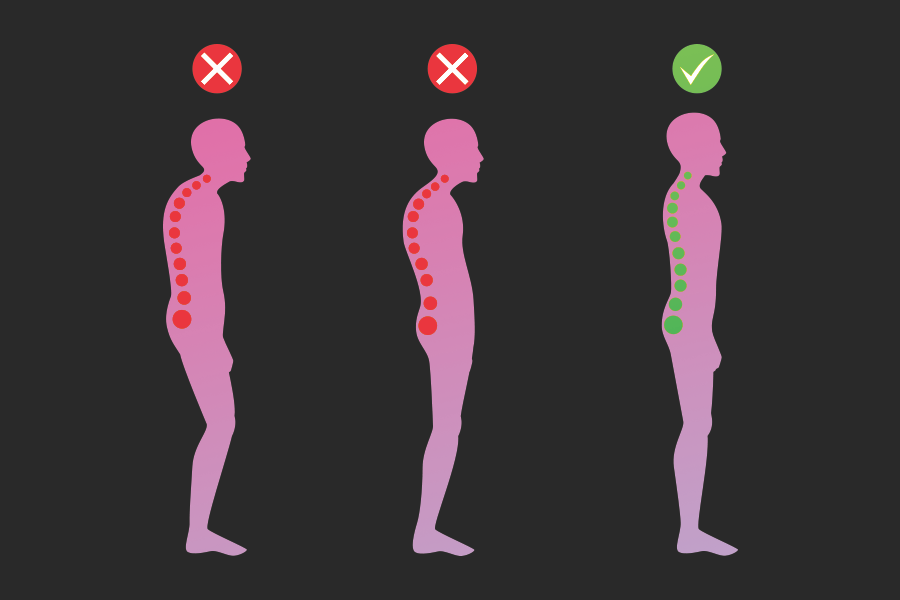We’re in the midst of a bad posture “epidemic.”
At least that’s according to the instructors at Prehab 2 Perform, a sports physical therapy practice in L.A., who gave me and some of my fellow gym-goers a crash course in posture correction over the weeked.
Granted, they would say that; they’re in the spine-correcting business. But to hear them tell it, business is a-booming. And between the increasingly long hours we spend each week hunched over keyboards at work, and the expectation that we always be available to our bosses outside of work — not to mention all the personal texting and phone-checking we do and all neck craning that comes it — it’s not hard to believe that we’re slowly devolving into a bunch of hunchbacked cretins and that bad posture has indeed reached epidemic levels.
This manifests in a number of alarming health conditions, from colon cancer and heart disease, to chronic back and hip pain, to truly harrowing maladies, such as having a saggy ass.
The biggest takeaway from the seminar, though, is that despite what our mothers may tell us, this isn’t a problem that will be solved by resolving to sit up straighter. No, good posture is about much more than sitting all the way back in your chair with your feet flat on the ground and elevating your computer monitor so it’s at eye-level — it’s about undoing years (or in my case, decades) of bad sitting and standing habits, and the years of muscular and skeletal problems those bad habits have caused.
Mostly, that means building muscle. Specifically, the back, neck, spine, shoulder, hip and abdominal muscles that you’ve probably neglected for years, and whose strengthening will allow you to maintain good posture for hours, without even being conscious of it. “[Good posture] should be as subconscious as walking,” says Lisa Navarro, the 29-year-old clinic director at Egoscue, a posture and chronic pain treatment center in L.A. “You don’t think about putting your right foot in front of your left when walking. That’s how your body should be when sitting. Your muscles should get to the point that they support your body the way it should be supported, without you thinking about it.”
The problem with trying to be conscious of your posture, and constantly trying to remind yourself to keep your shoulders back and down, is that no matter how vigilant you are, your focus will inevitably slip and so will your seating position. Your shoulders will hunch. Your butt will scoot toward the front of your chair, and you will slouch.
The only sustainable solution then is to have the strength to hold a good posture position naturally. To that end, Navarro says “sitting is now a sport,” and she coaches people to train for it as such. Egoscue clients are assigned a series of daily exercises designed to correct their unique muscular imbalances, and they usually exhibit a marked difference in their posture after just four weeks. “After a month, good posture is a matter of doing the exercises everyday, strengthening their muscles and creating a new habit — just like when people start going to the gym again,” she explains.
The class I attended was specifically geared toward 9-to-5 desk jockeys who, in their free time, also enjoy vigorous exercise. And given the number of moans I heard and strained faces I saw as we progressed through a series of what should’ve been easy stretches, the posture epidemic was all too real among our group.
For me, bad posture results in tension headaches: Tightness in my trapezius, neck and upper back, compounded with the everyday stress of work and life and my having absolutely no chill, can cause headaches that are sometimes so debilitating they force me to skip work or social engagements. For months, I’ve thought of this as a personal failing, a sign of my lack of discipline when it came to maintaining good posture at work.
But now I have the simple assurance of knowing I’m not mentally weak — only physically.
